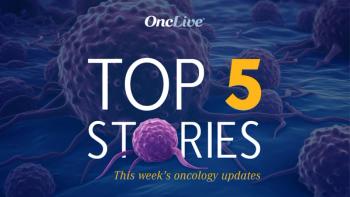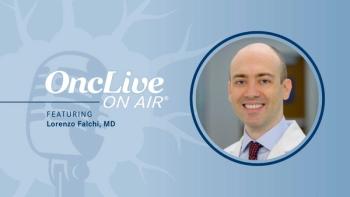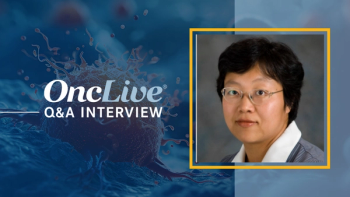
Long-Term Challenges With FLT3 Inhibition in AML
Transcript:
Naval G. Daver, MD: One of the long-term challenges with FLT3 inhibition in AML is the management of toxicities with these agents. In general, although these agents are much safer than many of the agents we use in the treatment of AML and ALL [acute lymphoblastic leukemia], they do have some unique toxicities. In midostaurin, for example, we do see that there may be a skin rash, and sometimes there is increased nausea and taste changes. For most of these symptoms, once an individual is aware of the drug, anti-nausea medications can be administered. Sometimes for the rash, you give low-dose steroids, etc.
Additionally, with quizartinib and gilteritinib, there are some unique adverse effects. With quizartinib especially, we see, albeit rarely, increased QT intervals, which is a cardiac issue. Luckily, there have been more than 1000 patients treated on quizartinib, and the incidence of actual clinical cardiac damage is very low. In fact, just 1 out of 1000 patients had it, and even that may have just been by chance, since a number of these patients are elderly patients. Nevertheless, we do recommend monitoring for the QTc interval.
This is included in all the phase II and phase III studies with quizartinib. One must be especially careful when they add other medications that may concurrently increase the QT interval. I usually recommend my Fellows, students, and whoever else is following these patients to keep an eye on what other medicines are being added. For example, if you have somebody on quizartinib, and then you prescribe Zofran [ondansetron], Levaquin [levofloxacin], and posaconazole, you may get into a predicament because you have 4 drugs that can impact the QT. Physicians who use these need to review some of the major papers; some listed medications should be used with caution. This could be counteracted if you, for example, use drugs such as Vantin [cefpodoxime] instead of quinolone or Cresemba [isavuconazole] instead of posaconazole. With simple alternatives, you reduce the risk of QT prolongation and potential impact.
With gilteritinib as well, there is a possibility of QT prolongation, although it is less common than with quizartinib. But the same rules apply. There is also a small incidence of GI [gastrointestinal] toxicity with diarrhea, nausea, etc; and like with quizartinib, these can be managed well. The awareness of these drugs—concomitant medications that are safe to use and not safe to use—is going to be important.
The second critical thing is going to be access to these drugs because most of these tyrosine kinase inhibitors [TKIs] are expensive, and we don’t know if all hospitals are going to be able to stock them. I know the big academic centers will, but, in the community, there is a lot of effort made by the companies like Astellas Pharma, Daiichi Sankyo, and Novartis to develop good patient-access programs.
Most of the community practices should reach out to their local patient advocate or local medical liaison to create a quick-access system for these FLT3 inhibitors. In fact, companies that are making FLT3 inhibitors have some form of getting quick access: They disseminate free drugs, some of them have very quick patient advocate programs, etc.
Another big debate we’re having is the use of maintenance, especially with midostaurin. The phase III data showed that midostaurin was most beneficial when it was used with induction, consolidation, and maintenance; however, the FDA approval has only approved it in induction and consolidation. We don’t know whether the benefit of midostaurin came only from the induction, consolidation, or the maintenance. My recommendation is to operate in accordance with the phase III study because that’s the only phase III data we have; however, there will be difficulty with insurance approval in the maintenance setting. There is going to be subsequent study looking specifically at the maintenance impact, but this will take a few years. At this time, I would consider the best available data, which are using it in the way it was in the phase III where it was induction, consolidation, and maintenance.
Transcript Edited for Clarity

























































































